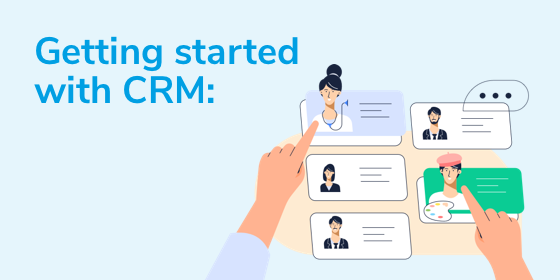Talentry Explainer: What is internal mobility?

Internal mobility is...
… a form of recruitment that focusses on the company's own employees as a candidate target group. They are invited and encouraged to apply for new positions within the company. This is why the terms internal mobility and internal recruitment are sometimes used synonymously. Many of the methods used for approaching applicants externally can also be used within the framework of an internal mobility programme. For example, a proactive approach to employees in terms of talent acquisition and an application process that is seen as a positive (candidate) experience are also recommended for internal hiring. In internal mobility, a distinction is made between horizontal mobility, which is usually equivalent to a promotion, and vertical mobility. In this case, the employee changes their specialist role or area within the company with roughly the same level of responsibility and pay.
What are the benefits of internal appointments?
Internal mobility often holds unexpected opportunities in the truest sense of the word. Because to exploit them, a company first of all needs to know what potential is lying dormant within its own ranks. Then again, employees should know about internal opportunities for personal development and be able to apply for internal vacancies without any qualms. This can produce a win-win situation for employers and employees.
Employers benefit from …
Cost savings in recruitment
If a vacancy can be quickly filled internally, the recruitment team saves an expensive and time-consuming search for candidates, including job ads, numerous job interviews and a lengthy selection process for new hires. Studies show that the time-to-hire is reduced significantly when vacancies are filled internally.
Short onboarding times
A significantly shorter onboarding phase also has a positive effect on recruitment costs. Internal staff already know company processes and structures and, as a rule, are well connected within the company. Especially for strategically important management positions, there is no need for a long induction process, so the candidate can work productively in his or her new role within a short time.
Flexibility in recruitment
Particularly where essential cost-saving measures and hiring freezes can lead to staffing gaps, filling jobs internally is a way of avoiding long-term and therefore expensive vacancies, and a way of sparing employees the extra burden that comes with it.
Employee retention
Making staff aware of career opportunities as part of internal recruitment improves employee retention rates. They are generally more loyal to their employer and remain in the company for longer.
Greater commitment
Companies that exploit the development potential of their employees and offer internal career opportunities benefit from greater employee engagement and commitment from their workforce with a positive impact on productivity.
Cultural fit
Internal mobility reduces the risk of appointing the wrong person because internal candidates already know and appreciate the company, its culture and values. In addition to proven professional qualifications, a good cultural fit is also guaranteed.
Retaining know-how
With internal appointments, existing knowledge remains in the company and can be further developed using individual training measures. At the same time, because of their internal experience and the new skills they have acquired, employees can be flexibly deployed within the company.
Exchange and synergies
Internal job moves encourage exchange between colleagues and departments. Internal networks are strengthened, so that synergies can be sensibly applied and departmental silo mentality overcome.
Employees benefit from …
Greater satisfaction and motivation
Those who feel valued and supported by their employer are more satisfied and motivated at work. In the long term, this has a positive effect on personal health, as well as on mental and physical ability.
Individual training and development
Internal mobility goes hand in hand with the strategic development of employees and workforce planning. Personal goals and wishes of the employees are discussed in regular personal development reviews and individual training measures agreed. This way, employees can manage and shape their own career paths.
Simple applications
Internal applications should ideally be significantly less time-consuming for employees than recruitment processes at a new employer. You don't need to worry about "nasty surprises" relating to company culture and the working atmosphere, and the probationary period is also eliminated.
What difficulties can occur in connection with internal mobility?
Despite the long list of benefits and although the internal job market has proved to be the most successful source of recruitment for twenty years, it is still not strategically developed or promoted by many companies. This has several reasons.
Internal moves are negatively perceived in the company
Actual corporate culture and overriding mentality often torpedo plans for an internal mobility programme. Widespread departmental egoism makes managers afraid of losing high performers to other teams, rather than encouraging the movement of employees. Company-wide networking and inter-departmental cooperation in the exchange of talent is in particular need of optimisation. This exchange is a fundamental prerequisite for staff movement within the company through internal recruitment. It is not uncommon for the internal talent pool to have a reputation for being a catch-all for sidelined employees. This stigma is difficult to correct. If, in addition, attractive positions are only filled internally 'on the quiet' or if only lower-level positions are filled internally while senior managers are always brought in from outside, then the benefits of internal mobility are difficult for employees to grasp.
Lack of communication & information
Poor communication and a lack of transparency are also typical sources of problems that hinder the success of an internal talent market. Internal mobility can hardly operate effectively if training and development and recruitment teams are not aligned on existing potential and current needs. And the employees themselves are also dependent on transparent communication in respect of appropriate job vacancies. Companies cannot avoid setting up clear structures for smooth information flows and integrated communication.
Employee misgivings
At the same time, you need to be aware of any employee inhibitions regarding applying for a new job within the company. Many fear negative reactions from colleagues and managers if there are no discrete ways of applying. And not every employee feels comfortable with the competition that can arise through strongly promoted internal mobility. Instead of the diverse professional experience that millennials often demand, they value reliability and stability in their job. Forced changes could be a reason for changing employer.
🎥 You want to learn more about internal communication with Talentry?
The best prerequisites for an internal job market
Clear goals and the right mindset
Even where companies invest in structures and technology, there is no guarantee of flourishing internal mobility. The mindset must be right – both in management and among employees. Employee development should be a management task and internal moves supported from all sides. So long as there is a negative attitude, internal mobility will never work. The goal of the internal job market needs to be clear and transparent. For example, is it about filling internal jobs in the usual way, or about structural changes in the company? Greater agility, more intensive project staffing or more sustainable personnel development may also be prime goals. Before getting employees onboard, it should be clear what you want to inspire them for.
Employee development
Companies wishing to promote internal job moves need to give employees the opportunity to acquire missing qualifications and skill sets. Talent mobility requires strategic talent development measures, such as training courses, workshops, coaching and mentoring programmes for upskilling. If these development opportunities are missing, so is an important motivator for talented employees wishing to develop and enhance their professional skills. A lack of qualifications can also be a hurdle to applying for a new role internally. In the context of internal mobility, employers should always indicate their willingness to prepare employees as well as possible for their new position and close any skills gaps.
No internal mobility programme without a talent pool
If the foundations have been laid and talent mobility is accepted as a permanent part of company culture, the following measures can assist in developing a forward-looking internal mobility strategy:
- Internal career pages: Just like the company's career website, an internal talent marketplace needs to be promoted so that all relevant jobs and information are transparent to employees, i.e. they can find out about new opportunities for change and career progression at any time.
- Employee profiles: Get an accurate overview of the employee potential in your company. You have a lot more information available about internal candidates than you might think – from hiring documentation, interview notes, performance reviews, salary information to completed courses and training. You can combine all this information in employee profiles to create a detailed picture and a database for your talent management.
- Talent pool: A talent pool is the supporting technological component for establishing internal mobility. It acts as a database for all employee profiles and includes intelligent search and filter functions. This means that suitable top talent can be quickly found and that HR is in a position to fill vacancies swiftly. Ideally, all recruiters and hiring managers within the company should have access to this pool; and, first of all, sift through it to see if there are any promising candidates – including those who previously applied but were not successful. This way, the HR department can save time and the high cost of twin-track external hiring. With its Internal Mobility module, Talentry, for example, offers wide-ranging features to support specific goals that, despite their complexity, are so intuitive to use that both people managers and employees can use the technology without any qualms.
- Internal candidate experience: What applies externally should also be taken into account with internal appointments. There's a candidate in every employee. So there is a need for the same measures that are used in relationship management with external candidates. A personal discussion with a human resources or line manager or line manager is just as helpful as targeted newsletters or details of current job vacancies that can be sent automatically sent via the talent pool.
- Discrete and easy application processes: The application process is part of the candidate experience. This means the simpler, the better. Uploading a CV should be possible discretely at any time with just a few clicks. Quick applications via an app ensure that employees working remotely or from home can also participate.
- Direct approach: Internal talent sourcing is also possible via the talent pool. Ideal candidates can be quickly identified, contacted directly and encouraged to apply. Take into account the individual career goals of the employee and link the job vacancy to suitable training measures if appropriate.
- Offer prospects: Initiatives such as trial days or internal internships can be used to make the central idea of internal mobility tangible to employees; or, for example, ideation methods used to get their buy-in for implementation. Inspire your employees by outlining personal opportunities and specific development potential.
Conclusion
Internal Mobility offers companies significantly more benefits than pure cost savings because filling vacancies internally is an elegant way of closing staffing gaps without additional financial outlay. It has been shown that companies able to offer employees new challenges and prospects for career development benefit from their motivation and loyalty. It also results in long-term team flexibility through which valuable synergies can be realised: know-how remains in the company and, at the same time, employees are more versatile. Staffing shortages, for example, can be more easily avoided.






.png)


